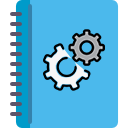The assignment of jobs to be performed on an image is the main functionality of the component Peppers for InDesign.
You access this feature through the contextual menu that operates on the images by selecting the item "processing" of the menu after you have selected one or more images.
The machining operation is available and possible only in the documents that are linked to Peppers and images that fall within the "types" provided by the configuration (e.g. JPG, PSD, PNG, ...). |
Peppers jobs are available in two different categories: Automatic and Manual.
Automatic Jobs are done through the InDesign plugin of Peppers without any manual operation (see paragraph Automatic editing with Photoshop and Automatic editing with Binuscan for more information).
The Manual Operations are done by Photo Editors using a software like Photoshop.
Single Image
| Multiple Images
|
Internal or External Jobs
From this page, the Graphic Designer can decide whether to assign jobs in an image to an internal Photo Editor (by clicking on the icon ![]() ) or to an external Photo Editor (by clicking on the icon
) or to an external Photo Editor (by clicking on the icon ![]() ).
).
The icon ![]() indicates instead that Local jobs have been completed.
indicates instead that Local jobs have been completed.
Selecting Internal or External Workings will trigger Two Different Workflows:
- By selecting External Workings, the external Photo Editor will be able to Download images from the WebApp through the button
 ;
; - Selecting Internal Workings, the internal Photo Editor will be able to Open the images directly from the WebApp by dragging the icon
 into Photoshop (or other photo editing programs).
into Photoshop (or other photo editing programs).
Automatic editing of images (Photoshop integration)
The Peppers plugin includes functionalities for automatic Photoshop processing. As soon as an image is processed by Photoshop, a new version is created.
Resize
This operation automatically resizes an image based on the dimensions of the box which contains it. Photoshop does the resize automatically, then in the InDesign layout the image is re-linked with to the new version.
Crop and Resize
This operation automatically crops and resizes an image based on the dimensions of the box which contains it. Photoshop does the resize automatically, then in the InDesign layout the image is re-linked with to the new version.
PSD conversion
This operation automatically converts an image original format to PSD. Photoshop does the conversion, then in the InDesign layout the image is re-linked to the new version.
PSD grouping (on multiple selection)
This operation becomes available only after a multiple selection of images placed on the layout is made. Photoshop groups all the selected images in a single PSD file which contains an image per each layer. A screenshot of the selected group of images is added in a first layer, preserving the visualization on the document. The selected images and relative boxes are removed from the layout and are replaced by a new box containing the new created PSD version.
Automatic editing on images (Binuscan integration)
The InDesign plugin of Peppers can integrate functionalities of third-party software of image optimizing. Binuscan is a software that is supported by Peppers.
If previously configured on the administration management, the box of automatic operations will contain the profiles inserted by the administrator. This profiles will be directly integrated with the working directories of Binuscan server and the plugin will copy the image in its input folder and wait for the output. Then it’ll copy the resulting image and it use it to automatically re-link the selected image in the InDesign layout.
Input and Output Folder
All modifications made by both Graphic Designer and Photo Editor don’t affect the original image because Peppers creates a new version to work on and leaves the original one into the input folder.
A copy of the image is saved in the output folder and Peppers works on it as a copy. As soon as an editorial is archived in Peppers, all linked images are available into the layout.
The name of the images is not changed in the process, but the format can be changed.


